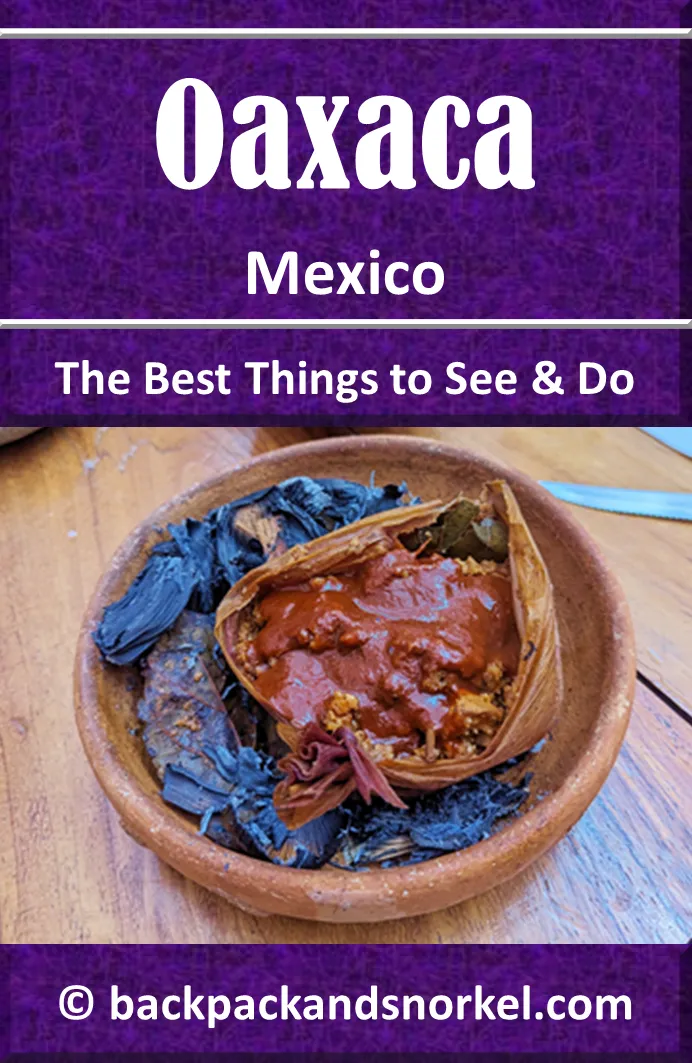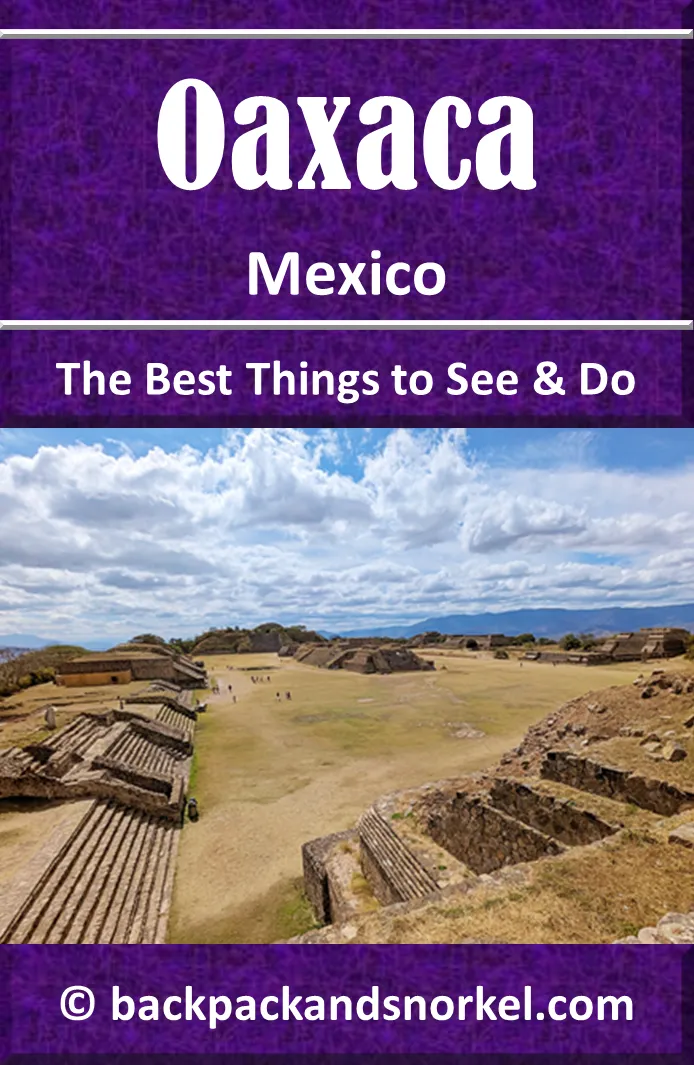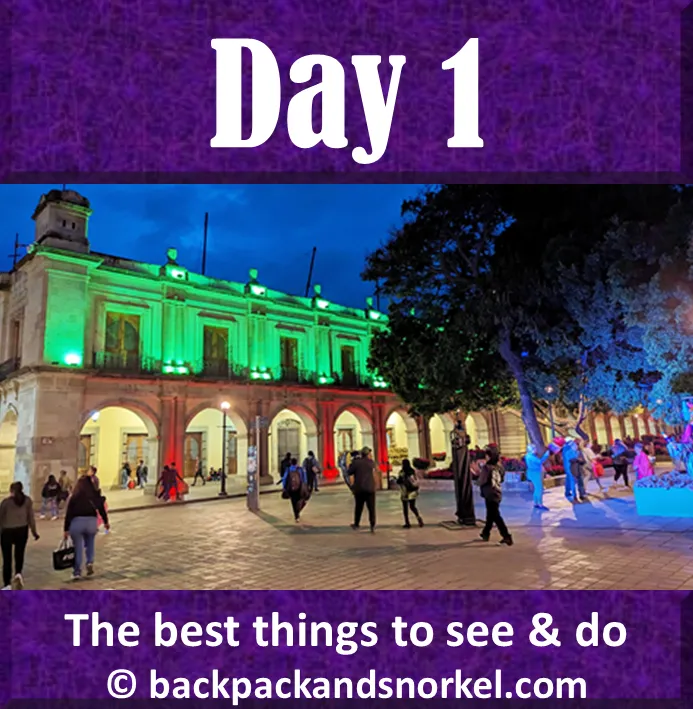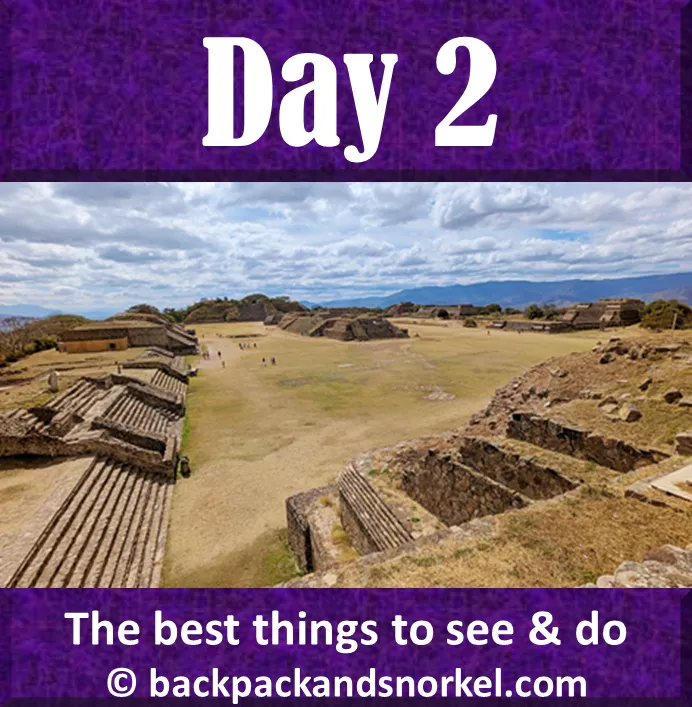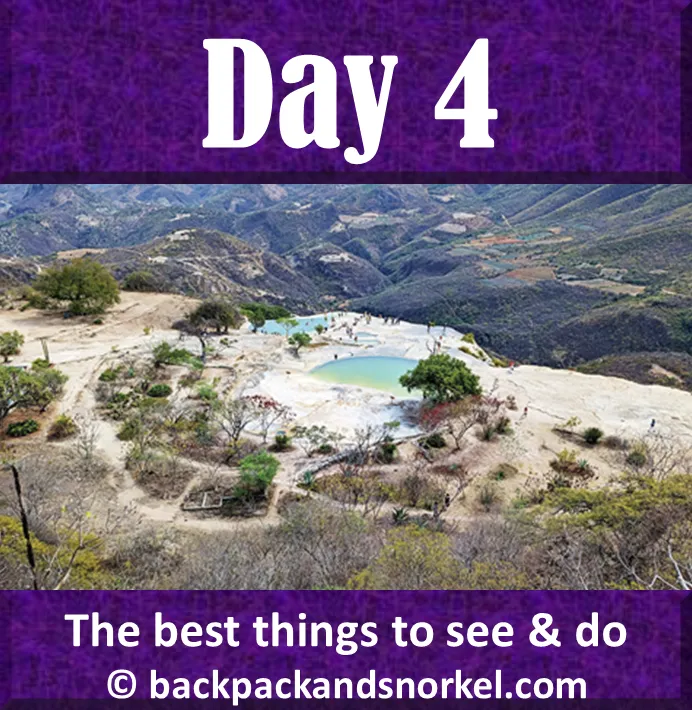Backpack and Snorkel Travel Guide for Day 5: Discovering Oaxacan Handicrafts - Oaxaca Purple Travel Guide
Today we will be exploring various Oaxacan handicrafts. We provide detailed information and the best things to see and we show lots of photos so you know what you can expect.
We used Orange Tours, a small executive tour company that is so good that they do not advertise as they get all their customers by referrals from previous customers. At the time of writing, they are only on Instagram and WhatsApp (Instagram).
Sergio, the owner, only speaks Spanish, but his colleague Carlos speaks perfect English as he had lived in the US for several years. We did our tour with Carlos and, what can I say, it was perfect! Carlos is super nice, he tries to over-fulfill each and every request you have, he is super knowledgeable and communicative and his car is in top condition. His translations during the demonstrations were super helpful.
You can tell them what you want to see and they will make an itinerary for you. I had a special request to see how quesillo is manufactured and they immediately had it added to the itinerary even though they typically do not go there.
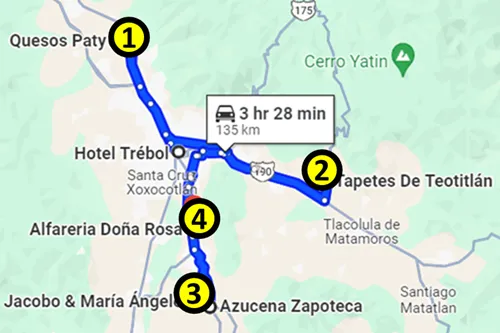
1 = Quesos Paty - Quesillo Demonstration
2 = Tapetes Teotitlan – coloring and weaving
3 = Jacobo y María Angeles - Alebrijes
4 = Alfareria Doña Rosa – shiny black pottery
Quesos Paty - Quesillo Demonstration
Quesillo is also known as Oaxaca cheese or queso Oaxaca. It is a white, semi hard, low-fat cheese which tastes somewhat similar to unaged Monterey Jack (but it is saltier because salt is used as a preservative for quesillo), but its texture is closer to mozzarella or string cheese.
The town of Etla, north of Oaxaca, is the epicenter of quesillo production in Mexico.
Even though there are many quesillo producers in Etla, only very few allow tourists to see their process.
Quesillo production is a laborious process and, as far as we know, it is only produced in labor intensive small-scale batches in family-owned facilities.
Quesillo is a popular ingredient not just for Oaxacan dishes, but also for typical Mexican foods like quesadillas and empanadas.
At Quesos Paty, you will witness the whole quesillo production process and you will be able to taste the quesillo that is being produced right before your eyes. It cannot get any fresher than that.
You will also learn why quesillo tastes a little salty.
The owner does not speak English, but Carlos was easily able to translate everything.
For me, the quesillo demonstration was one of the highlights of our Oaxaca trip.
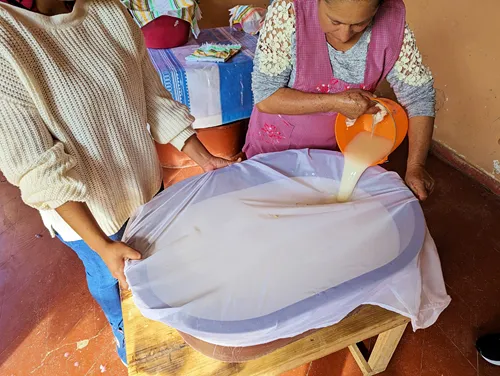
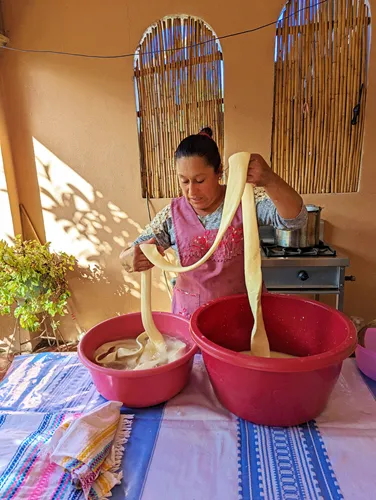
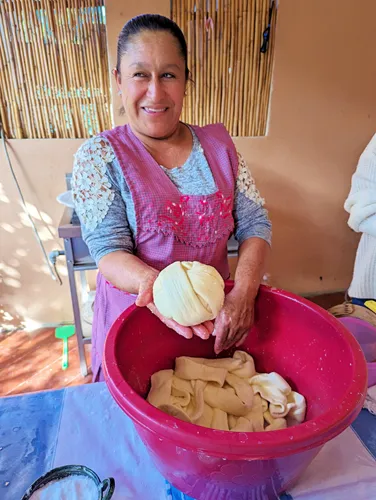
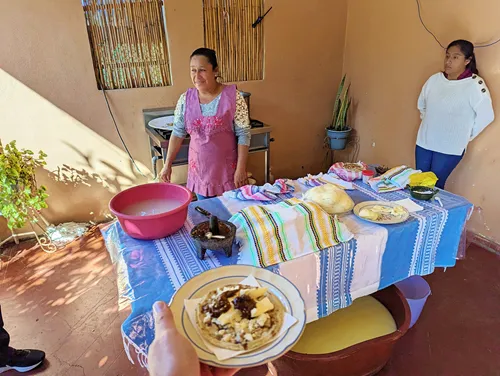
Tapetes Teotitlan – coloring and weaving
Teotitlan de Valle is a town that specializes in the weaving of textiles, and especially rugs. The weaving is done on hand-operated looms, using wool from locally held sheep. Almost all the wool is dyed with natural dyes that come from local sources. There are many showrooms where the owners give demonstrations of how they weave and some of them even have English tours.
When I worked on the destinations list with our tour guide, I mentioned that I would be very interested in the dyes and dyeing process. Carlos listened and brought us to Tapetes de Teotitlan, where the owner, who only speaks Spanish and Carlos translated, explained the dyes and dyeing process to us in detail, before he explained and demonstrated the weaving process.
I found it fascinating from which natural sources the dyes were made and how sometimes adding a little lime juice totally changed the color.
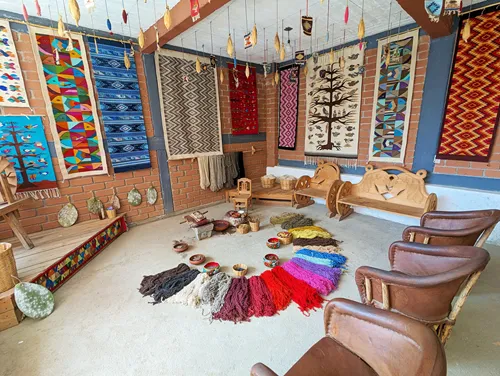

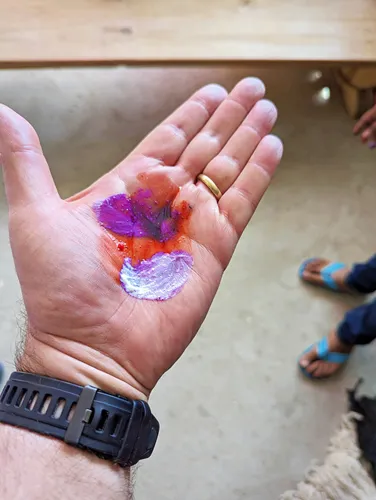

Jacobo y María Angeles - Alebrijes
Alebrijes are colorfully painted fantasy animal-like figures that nearly every souvenir store in Oaxaca carries.
Alebrijes were first envisioned in 1936 by artist Pedro Linares, when he suffered from feverish hallucinations by a severe illness (peritonitis). After his recovery, he created his first fantasy sculptures out of traditional cartonería (a type of papier-mâché) and called the Alebrijes.
His work eventually got attention of Diego Rivera and Frida Kahlo, two of Mexico’s most famous artists, and a 1975 British documentary helped popularize Alebrijes.
His descendants have carried on his work and still create Alebrijes out of cartonería in Mexico City.
Artisans in Oaxaca have taken up the art to create Alebrijes and developed it further. In fact, artisans in Oaxaca outsell artisans in Mexico City and Alebrijes are nowadays associated with Oaxaca rather than Mexico City.
In Oaxaca, most Alebrijes are made of copal. Copal is the wood of a tree called Bursera Glabrifolia, which is native to central Mexico. The immense popularity of Alebrijes has led to a significant decrease of Bursera Glabrifolia trees in several areas in the state of Oaxaca.
There are three towns in Oaxaca that have Alebrije manufacturing as their main income source: San Antonino Arrazola, San Martin Tilcajete, and La Union Tejalapam. Of these three towns, San Martin Tilcajete is the most successful and one of the reasons for the success is that Jacobo Angeles, one of the most famous Alebrije artisans, has his workshop there.
All Alebrijes are hand-cut and then carved by hand. The carving is done on the still wet wood and drying can take up to ten months for the larger Alebrijes. Cracks that occur are then filled with small copal wood pieces and sawdust resin mixtures before they are sanded and undergo a two-step painting process. High quality Alebrijes will have their larger extremities like tails, ears carved separately with great precision so that they fit seamlessly into the body without falling out. This is mostly done to use as much of the precious copal wood as possible.
Many Alebrijes are painted using colors from natural raw materials. Some use more modern acrylic paints that provide superior fade resistance.
Since we were interested in colors, Carlos made sure that we got a color demonstration on our Alebrije factory tour, too. Several of the colors were the same as at Tapetes Teotitlan, but some colors were different.
We really appreciated watching the artisans paint the Alebrijes. They do it painstakingly point by point thousands of times and that explains why some Alebrijes are really expensive. The manual labor, carving and painting, ensures that each and every Alebrije is unique.
Alebrijes are a top souvenir for tourists and many are exported and sold overseas, especially in the US and Europe.
One custom that has developed over time is a connection between Alebrijes and Tonas in Zapotec cosmology that did not exist when Pedro Linares envisioned Alebrijes.
According to Zapotec beliefs, every person has two Tonas, animals that shape our personality and accompany us throughout our lives, depending on the day we were born.
Many tourists ask the staff what their Tonas are and then buy Alebrijes representing their Tonas.
One of the two Tonas is a Protector and the other one a Guide. The Protector is determined by the day and month we were born and the Guide by the year we were born.
Unfortunately, the days, months and years are according to the Zapotec sacred calendar which has 13 months with 20 days in each month. There is no easily accessible converter, but the staff at most Alebrije stores will have a book that helps translate your birthday into the correct Alebrijes.
There are 20 Tonas, and all are animals that can be found in the region the Zapotec once inhabited.
The 20 Tonas are:
- Coyote: the characteristics are: cunning, intelligence, and adaptability.
- Iguana: the characteristics are: patience, flexibility, and the ability to overcome challenges.
- Armadillo: the characteristics are: protection, strength, and the ability to face difficulties.
- Turtle: the characteristics are: longevity, wisdom, and stability.
- Snake: the characteristics are: transformation, renewal, and hidden knowledge.
- Rabbit: the characteristics are: fertility, creativity, and new beginnings.
- Deer: the characteristics are: gentleness, intuition, and grace.
- Frog: the characteristics are: adaptability, resourcefulness, and good luck.
- Dog: the characteristics are: loyalty, companionship, and protection.
- Monkey: the characteristics are: playfulness, curiosity, and intelligence.
- Owl: the characteristics are: wisdom, intuition, and the ability to see through darkness.
- Eagle: the characteristics are: power, leadership, and vision.
- Jaguar: the characteristics are: strength, courage, and protection.
- Butterfly: the characteristics are: transformation, beauty, and new beginnings.
- Fish: the characteristics are: abundance, prosperity, and emotional depth.
- Snail: the characteristics are: with patience, perseverance, and carrying your own home.
- Hummingbird: the characteristics are: joy, sweetness, and bringing happiness to others.
- Opossum: the characteristics are: adaptability, resourcefulness, and playing dead to avoid danger.
- Mockingbird: the characteristics are: mimicry, communication, and adaptability.
- Bat: the characteristics are: transformation, night vision, community, and renewal.
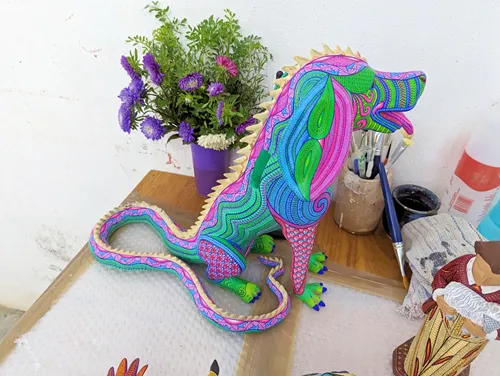
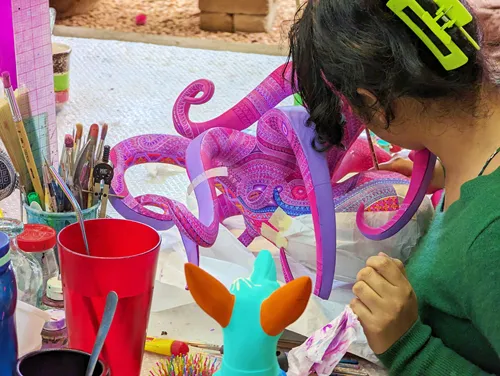
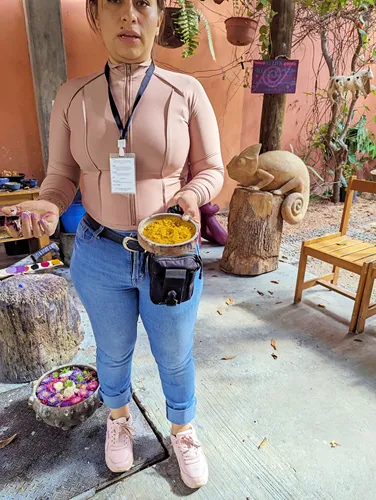
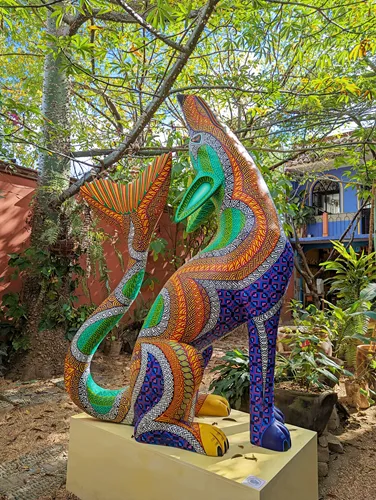
Alfareria Doña Rosa – shiny black pottery
Barro negro (black clay) pottery has been produced in the Oaxaca area for hundreds of years. In the 1950s, Doña Rosa discovered that she could make the matte dark grey pottery look shiny black by polishing it with a quartz stone before firing and then firing at slightly lower temperature than normal.
Her invention made shiny black pottery a collector’s item and soon encouraged others in the Coyotepec area to copy this technique.
Doña Rosa passed away in 1980, but her workshop is still owned by her family and they still produce shiny black pottery and give demonstrations on how it is made.
The process produces shiny black pottery that is more brittle than normal black pottery and therefore best used for ornamental purposes. Also, the gloss will wear off when the pottery comes in frequent contact with water. Some of the products that you can buy here have been coated and are therefore OK for water contact.

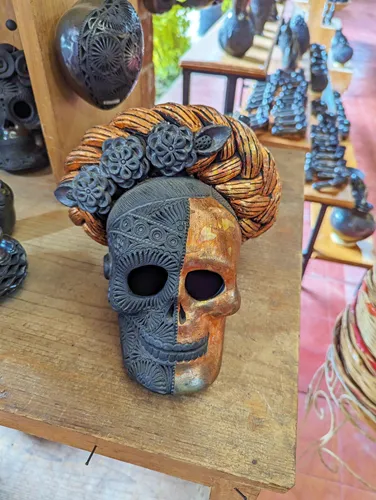


This concludes Day 5 of your Oaxaca tour.
Where do you want to go now?
Author: Rudy at Backpack and Snorkel
Bio: Owner of Backpack and Snorkel Travel Guides. We create in-depth guides to help you plan unforgettable vacations around the world.
Other popular Purple Travel Guides you may be interested in:
Like this Backpack and Snorkel Purple Travel Guide? Pin these for later:
